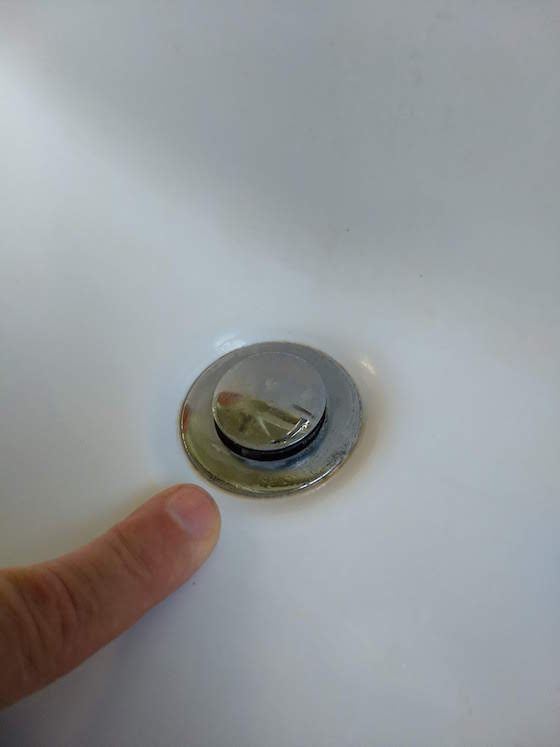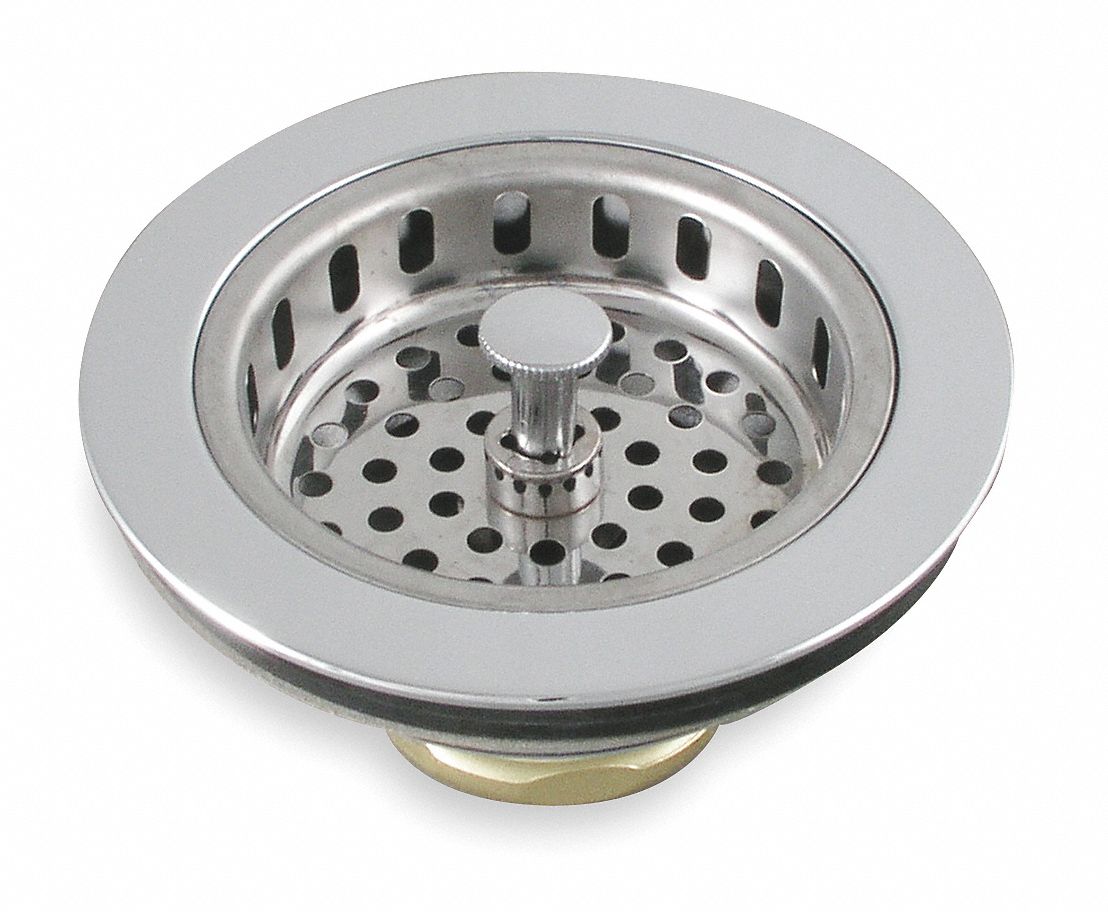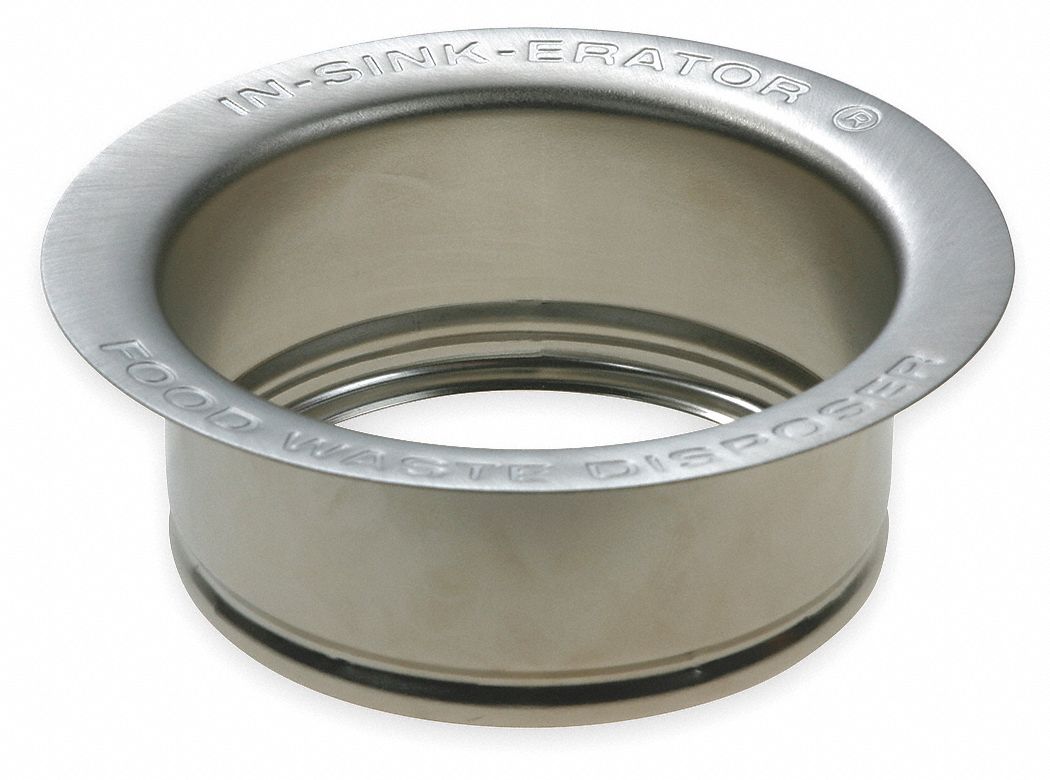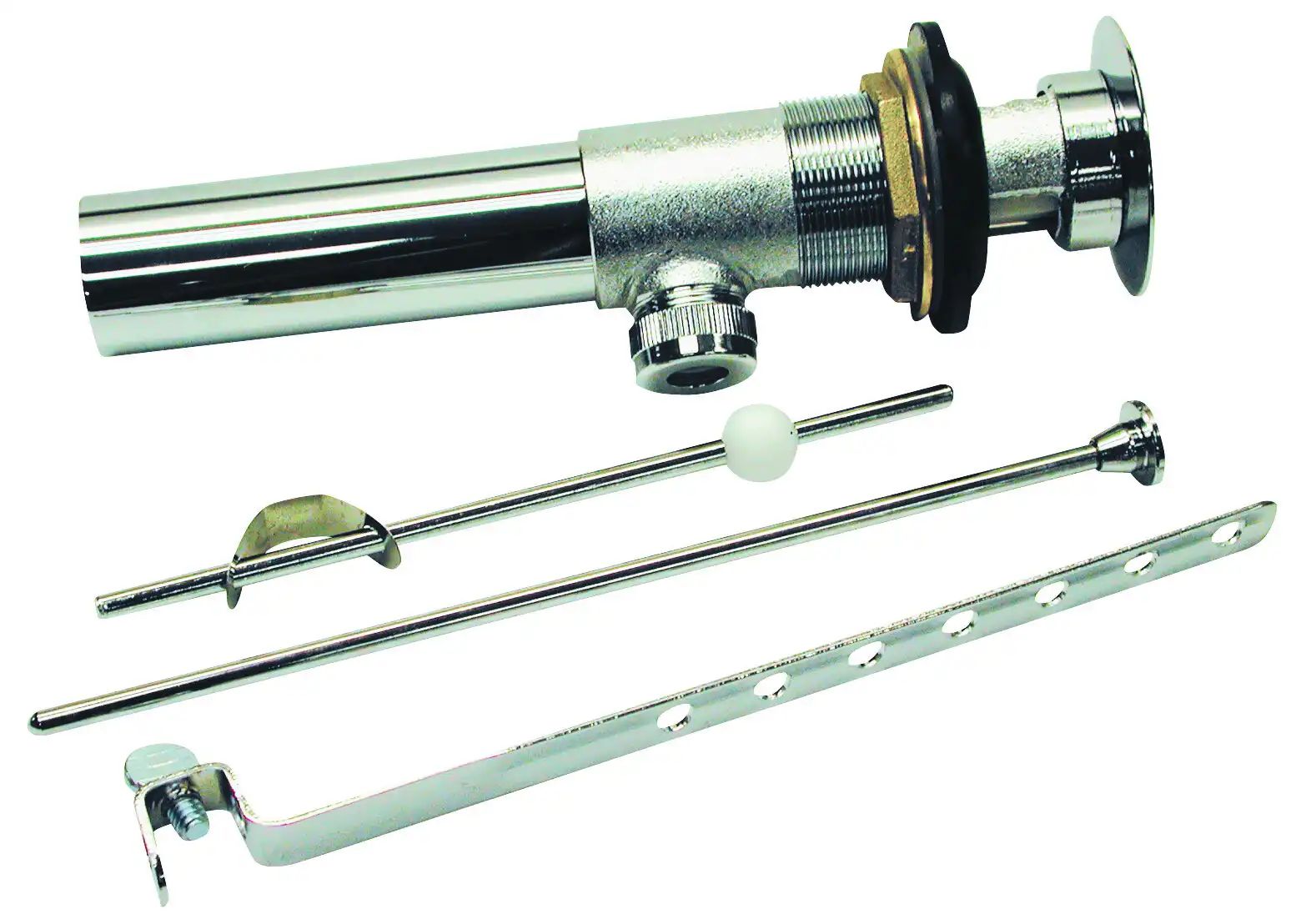The sink drain is an essential part of any bathroom sink, as it allows water to flow out of the sink and into the plumbing system. It is typically located at the bottom of the sink and is connected to the sink stopper and the sink tailpiece. The sink drain is responsible for keeping the sink basin clear of any standing water, preventing potential clogs and maintaining proper drainage.Sink Drain
The sink stopper is a small device that sits inside the sink drain and can be lifted or pushed down to control the flow of water. It is typically connected to a lever or knob on the back of the sink, allowing the user to easily open and close the drain. The sink stopper is an important part of the sink as it helps to prevent water from continuously flowing down the sink and can also be used to fill the sink with water for tasks like washing your face or shaving.Sink Stopper
The sink plug is a small, circular device that fits into the sink drain and creates a watertight seal when pushed down. It is commonly used in sinks without a built-in sink stopper, as it serves the same purpose of preventing water from continuously flowing down the drain. Sink plugs are available in various sizes and can be easily removed to allow for proper drainage.Sink Plug
The sink strainer is a perforated metal or plastic piece that fits into the sink drain and acts as a filter to catch any large pieces of debris that may cause clogs. It is typically removable, making it easy to clean and maintain. Sink strainers are especially useful in preventing hair and other small items from going down the drain and causing blockages.Sink Strainer
The sink basket is a small, removable basket that fits into the sink strainer and serves as an additional filter for catching debris. It is often made of metal or plastic mesh and can be easily lifted out of the sink for cleaning. Sink baskets are useful for preventing small items and food scraps from going down the drain and causing clogs.Sink Basket
The sink flange is a flat, circular piece that sits on top of the sink and connects to the sink drain. It is responsible for creating a seal between the sink and the drain, preventing any leaks or water from escaping. Sink flanges are commonly made of metal, porcelain, or plastic and can come in various sizes to fit different sink types.Sink Flange
The sink tailpiece is a pipe that connects the sink drain to the P-trap and carries water away from the sink. It is typically made of metal or plastic and can be easily adjusted to fit different sink heights. The sink tailpiece is an important part of the sink plumbing system, as it helps to maintain proper drainage and prevent any leaks.Sink Tailpiece
The sink P-trap is a curved pipe that is shaped like the letter "P" and connects the sink tailpiece to the main plumbing system. It is responsible for trapping water in the pipe, creating a barrier between the sink and any sewer gases that may enter the house. The sink P-trap is an essential part of any sink, as it helps to keep the bathroom smelling fresh and prevents any harmful gases from entering the living area.Sink P-Trap
The sink pop-up assembly is a mechanism that connects to the sink stopper and allows for easy opening and closing of the drain. It is typically located under the sink and is connected to a rod that runs through the sink's drain pipe. The sink pop-up assembly is a convenient and modern alternative to traditional sink stoppers and can be easily adjusted or replaced if needed.Sink Pop-Up Assembly
The sink overflow cover is a small cover that sits near the top of the sink and prevents water from overflowing onto the counter. It is typically connected to the sink drain and is designed to redirect excess water back into the drain. Sink overflow covers are especially useful in preventing accidental overflows and can be easily removed for cleaning.Sink Overflow Cover
The Importance of Knowing Bathroom Sink Parts

Understanding the Different Parts of a Bathroom Sink
 When it comes to designing your dream house, every detail matters, including the bathroom sink. A bathroom sink not only serves a functional purpose but also adds to the overall aesthetic of your bathroom. To properly maintain and repair your bathroom sink, it's essential to know the different parts that make up this crucial fixture. Let's take a closer look at the
main
parts
of
a
bathroom
sink
and their names.
When it comes to designing your dream house, every detail matters, including the bathroom sink. A bathroom sink not only serves a functional purpose but also adds to the overall aesthetic of your bathroom. To properly maintain and repair your bathroom sink, it's essential to know the different parts that make up this crucial fixture. Let's take a closer look at the
main
parts
of
a
bathroom
sink
and their names.
The Bowl
 The bowl is the main part of the bathroom sink, and it's where water is stored and drained. It comes in various shapes, sizes, and materials, such as porcelain, ceramic, and stone.
Choosing
the
right
bowl for your bathroom sink is important as it sets the tone for the entire design.
The bowl is the main part of the bathroom sink, and it's where water is stored and drained. It comes in various shapes, sizes, and materials, such as porcelain, ceramic, and stone.
Choosing
the
right
bowl for your bathroom sink is important as it sets the tone for the entire design.
The Faucet
 The faucet is the part of the sink where water flows out. It's important to choose a faucet that not only fits your sink but also complements the overall design of your bathroom. There are different types of faucets, such as single-handle, double-handle, and touchless, each with its own advantages and
unique
look
.
The faucet is the part of the sink where water flows out. It's important to choose a faucet that not only fits your sink but also complements the overall design of your bathroom. There are different types of faucets, such as single-handle, double-handle, and touchless, each with its own advantages and
unique
look
.
The Drain
 The drain is the part of the sink that allows water to be drained out. It's located at the bottom of the bowl and is connected to the plumbing system. The most common type of drain is a pop-up drain, which has a stopper that can be raised or lowered to control the flow of water.
The drain is the part of the sink that allows water to be drained out. It's located at the bottom of the bowl and is connected to the plumbing system. The most common type of drain is a pop-up drain, which has a stopper that can be raised or lowered to control the flow of water.
The P-trap
 The P-trap is a curved pipe that connects the drain to the plumbing system. Its main purpose is to prevent sewer gases from entering your bathroom. It also helps catch any objects that may have accidentally fallen down the drain, preventing clogs from occurring.
The P-trap is a curved pipe that connects the drain to the plumbing system. Its main purpose is to prevent sewer gases from entering your bathroom. It also helps catch any objects that may have accidentally fallen down the drain, preventing clogs from occurring.
The Mounting Hardware
 The mounting hardware is what holds the sink in place. It includes brackets and bolts that attach the sink to the wall or countertop. It's important to ensure that the mounting hardware is sturdy and secure to prevent any accidents or damage to the sink.
The mounting hardware is what holds the sink in place. It includes brackets and bolts that attach the sink to the wall or countertop. It's important to ensure that the mounting hardware is sturdy and secure to prevent any accidents or damage to the sink.
Conclusion
 Knowing the different parts of a bathroom sink is crucial for proper maintenance and repairs. It also allows you to make informed decisions when designing your dream bathroom. By understanding the various parts and their names, you can create a functional and visually appealing bathroom sink that adds to the overall beauty of your house. So next time you're using your bathroom sink, take a moment to appreciate all the different parts that make it work.
Knowing the different parts of a bathroom sink is crucial for proper maintenance and repairs. It also allows you to make informed decisions when designing your dream bathroom. By understanding the various parts and their names, you can create a functional and visually appealing bathroom sink that adds to the overall beauty of your house. So next time you're using your bathroom sink, take a moment to appreciate all the different parts that make it work.








/sink-drain-trap-185105402-5797c5f13df78ceb869154b5.jpg)

:max_bytes(150000):strip_icc()/how-to-install-a-sink-drain-2718789-hero-24e898006ed94c9593a2a268b57989a3.jpg)








:max_bytes(150000):strip_icc()/bathroom-sink-drain-installation-2718843-07-2b728cbd5c994dc39179346f51bb6421.jpg)























































/sink-drain-trap-185105402-5797c5f13df78ceb869154b5.jpg)
:max_bytes(150000):strip_icc()/replacing-a-sink-p-trap-2718773-hero-f3f65fbc400e41438c4d8280de025fc6.jpg)



































:max_bytes(150000):strip_icc()/ScreenShot2018-10-09at1.34.54PM-5bbce6d046e0fb0026bbc387.png)
